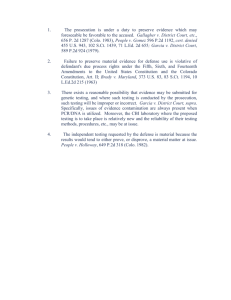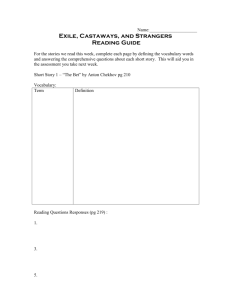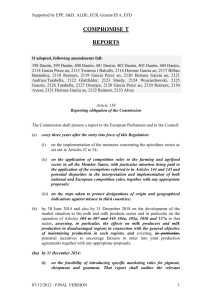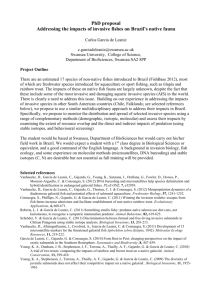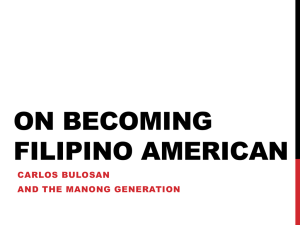Chapter 24: Carlos Garcia Era 1957-1961
advertisement
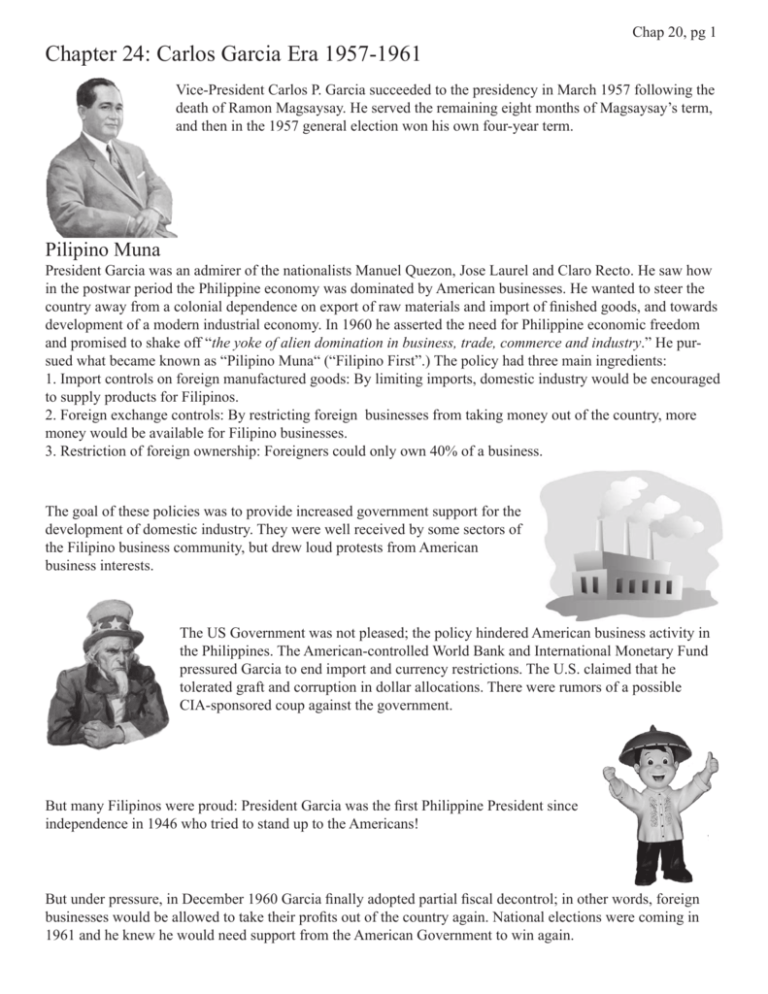
Chapter 24: Carlos Garcia Era 1957-1961 Chap 20, pg 1 Vice-President Carlos P. Garcia succeeded to the presidency in March 1957 following the death of Ramon Magsaysay. He served the remaining eight months of Magsaysay’s term, and then in the 1957 general election won his own four-year term. Pilipino Muna President Garcia was an admirer of the nationalists Manuel Quezon, Jose Laurel and Claro Recto. He saw how in the postwar period the Philippine economy was dominated by American businesses. He wanted to steer the country away from a colonial dependence on export of raw materials and import of finished goods, and towards development of a modern industrial economy. In 1960 he asserted the need for Philippine economic freedom and promised to shake off “the yoke of alien domination in business, trade, commerce and industry.” He pursued what became known as “Pilipino Muna“ (“Filipino First”.) The policy had three main ingredients: 1. Import controls on foreign manufactured goods: By limiting imports, domestic industry would be encouraged to supply products for Filipinos. 2. Foreign exchange controls: By restricting foreign businesses from taking money out of the country, more money would be available for Filipino businesses. 3. Restriction of foreign ownership: Foreigners could only own 40% of a business. The goal of these policies was to provide increased government support for the development of domestic industry. They were well received by some sectors of the Filipino business community, but drew loud protests from American business interests. The US Government was not pleased; the policy hindered American business activity in the Philippines. The American-controlled World Bank and International Monetary Fund pressured Garcia to end import and currency restrictions. The U.S. claimed that he tolerated graft and corruption in dollar allocations. There were rumors of a possible CIA-sponsored coup against the government. But many Filipinos were proud: President Garcia was the first Philippine President since independence in 1946 who tried to stand up to the Americans! But under pressure, in December 1960 Garcia finally adopted partial fiscal decontrol; in other words, foreign businesses would be allowed to take their profits out of the country again. National elections were coming in 1961 and he knew he would need support from the American Government to win again. Chap 20, pg 2 U.S. Military Bases The large U.S. military bases were on land leased from the Philippine government, but they caused many problems. The Garcia administration entered lease negotiations with the Eisenhower administration. The U.S. Joint Chiefs of staff considered the bases a “basic feature of U.S. strategy” in Asia: closeness to Communist China, Japan, Taiwan, Indonesia, and Southeast Asia made the Philippines an essential link in the global American military strategy. In 1959 the two countries signed the Bohlen-Serrano Agreement which shortened the term of the 1947 Military Bases Agreement from 99 years to 44 years, renewable every five years. The U.S. also agreed not to station nuclear missiles, to turn over unused bases, to consult before launching combat operations, and to turn over to Philippine administration the Subic Bay town of Olongapo, which until then had been under U.S. jurisdiction. In return, the Philippines allowed the U.S. to enlarge the Subic Bay and Sangley Point Naval Stations. Launching Pads The U.S. bases were used as launching pads for American military interventions in Southeast Asia: * In 1958, they were used to support the CIA-sponsored “Operation Haik” coup attempt in Indonesia. * Beginning in 1960, the bases were used to ramp up U.S. intervention in Vietnam and Laos. Joseph B. Smith The American CIA did not like President Garcia, partly because his “Filipino First” policy hurt American businessmen in the Philippines. The U.S. wanted “another Magsaysay,” and so the CIA’s Asia station chief, Joseph B. Smith, was sent to Manila to find one. In the Philippines he posed as a civilian U.S. Air Force employee and organized a six-man senatorial slate for the 1959 Philippine elections. He funneled 200,000 dollars to the group, including 50,000 dollars to Diosdado Macapagal. US Peace Corps In October 1961, the first group of U.S. Peace Corps volunteers in the Philippines arrived to begin classroom assignments in the areas of language, mathematics, and science. This was a very popular program. Chap 20, pg 3 Opposition to President Garcia By 1961, there were several groups opposed to Garcia: * American businessmen and the US Government, angry about the Filipino First policy; * Chinese and Filipino-Chinese businessmen, also unhappy about the Filipino First policy; * Filipino commodity exporters who wanted to end tariff and currency controls; * Filipinos tired of graft and corruption in the government; * Senior AFP officers who were prohibited by Garcia from running executive agencies. 1961 Philippine Presidential Election In the 1961 elections, President Garcia was challenged by his own Vice President, Diosdado Macapagal. Macapagal was on the CIA payroll, and the CIA donated 200,000 dollars to his Presidential campaign because of Garcia’s anti-U.S. business platform. Macapagal’s campaign focused on the issue of corruption stemming from Garcia’s “Filipino First” policy: he was suggesting that Garcia was using economic nationalism to cover up corruption in his own government. In the election, Macapagal defeated Garcia with 55% of the votes. The CIA’s Asia station chief, Joseph B. Smith, commented about the CIA’s involvement in the elections: “It was the American century, and we Americans had been chosen to do good in the world. We had a unique relationship with the Filipinos, special obligations toward them. The CIA was on the side of the angels, there’s no doubt about it. We hoped to bring a political, economic, and social revolution to the Philippines, break up the old oligarchy and promote genuine democracy.” This was one more example of blatant U.S. Government interference in the domestic affairs of the Philippines. The lesson: Don’t make Uncle Sam angry!

